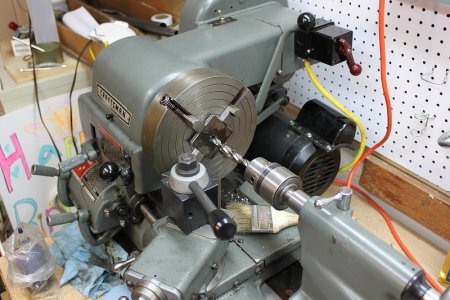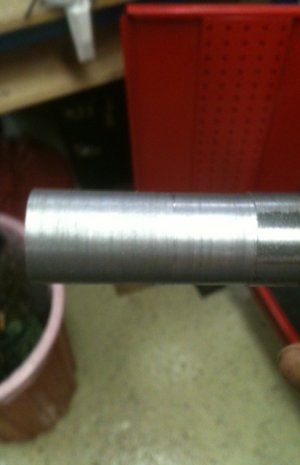- Joined
- Nov 16, 2012
- Messages
- 5,596
Ryan,
What kind of lathe are you building that bench for? Also, I hope you saw the thread about "how level does a lathe need to be" -or something like that... I had a tall bench very similar to yours but the legs were heavy-wall 2" black pipe. It was pretty solid indeed because I'm a fiend when I got a welding torch in my hand... When all was said and done, I still had to brace the daylights out of it and add about 400lbs of ballast (in the form of tools etc). If it's an Atlas-type with the idler pulley and/or suspended motor, you might need to brace-up the short sides too. Criss-crosses of heavier angle iron did the trick. Light angle iron did little to help.
I took for granted the 1+ ton LeBlond I learned-on and grew up with. When I got back into machining, I got an Atlas -and consequently learned a lot more than I cared to about rebuilding lathes and getting the vibration ghosts out. Anyhow, the upshot was that the machine's weaknesses had to be addressed so the motor, belts and sheaves etc. needed fine-tuning and chucks had to be balanced. After that, the rest gets fixed with brute-force strength and mass. And much to my surprise, much of the table vibrations were coming from the short-sides (back and forth, not side-to-side in the long direction).
Anyhow, your bench looks good -and I bet folks are happy that it's out of the kitchen now...
Ray
What kind of lathe are you building that bench for? Also, I hope you saw the thread about "how level does a lathe need to be" -or something like that... I had a tall bench very similar to yours but the legs were heavy-wall 2" black pipe. It was pretty solid indeed because I'm a fiend when I got a welding torch in my hand... When all was said and done, I still had to brace the daylights out of it and add about 400lbs of ballast (in the form of tools etc). If it's an Atlas-type with the idler pulley and/or suspended motor, you might need to brace-up the short sides too. Criss-crosses of heavier angle iron did the trick. Light angle iron did little to help.
I took for granted the 1+ ton LeBlond I learned-on and grew up with. When I got back into machining, I got an Atlas -and consequently learned a lot more than I cared to about rebuilding lathes and getting the vibration ghosts out. Anyhow, the upshot was that the machine's weaknesses had to be addressed so the motor, belts and sheaves etc. needed fine-tuning and chucks had to be balanced. After that, the rest gets fixed with brute-force strength and mass. And much to my surprise, much of the table vibrations were coming from the short-sides (back and forth, not side-to-side in the long direction).
Anyhow, your bench looks good -and I bet folks are happy that it's out of the kitchen now...
Ray


